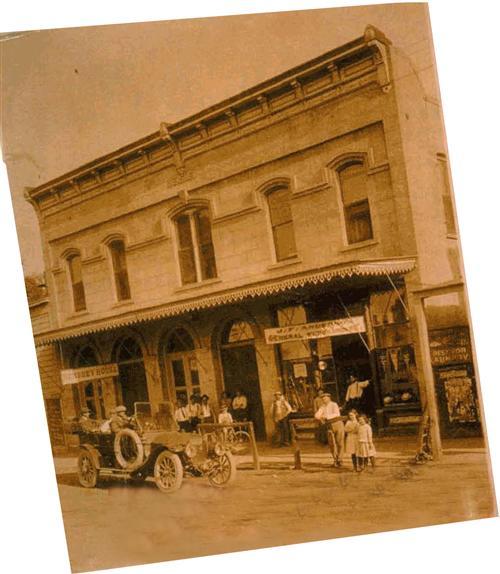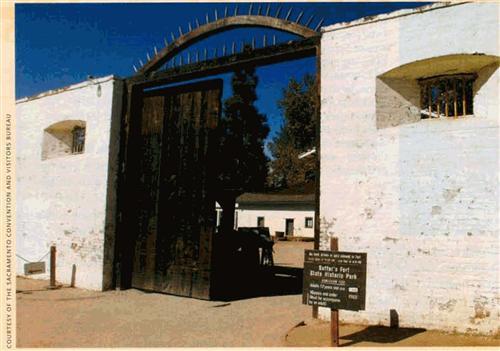Sign up for the Family Tree Newsletter Plus, you’ll receive our 10 Essential Genealogy Research Forms PDF as a special thank you!
Get Your Free Genealogy Forms
"*" indicates required fields

Situated on the Sacramento River in northern California, Sacramento started as a home base for miners and grew with the gold rush. In 1849 alone, the population leapt from 150 to 6,000. Forces of nature — a flood, two fires and a cholera outbreak — conspired to all but wipe out the new metropolis. But Sacramento remained standing to become the capital of California.
Today, the city holds more gold for genealogists than for prospectors. In fact, hundreds of family historians will strike it rich there this spring, when Sacramento hosts the National Genealogical Society‘s (NGS) annual conference May 19-22. Aptly themed “A Golden Prospect,” the conference will feature lectures from leading genealogical experts — on topics from reading early American and German handwriting to drawing a land plat to using a digital camera. Learn more from the conference Web site <www.eshow2000.com/ngs>.

Mining for ancestral gold
Jump right into the mother lode of Golden State resources in the California History Room of the California State Library (900 N St., Room 200, 916-654-0176, <www.library.ca.gov>). There, you’ll find extensive primary and secondary source materials, so plan on spending several hours (or days) looking through the collections. Hours are 9:30 a.m. to 4 p.m. Monday through Friday.
Among its holdings are the federal censuses of California from 1850 through 1930, as well as the 1852 California state census. Additional records include the Great Register of Voters, which contains lists of registered voters from 1866 through 1944.
The history room also has a nearly complete run of telephone directories for many California cities from 1900 on, city and county directories (some dating from 1850), biographical dictionaries and county histories. Researchers can access microfilms of California newspapers from 1846 to the present, with a long run of at least one title from every California county.
If your family arrived in California before 1860, check the Pioneer Card File. Indexed by name, the file contains information on early Californians obtained from either pioneers or their descendants. You also might find your ancestor mentioned in the California Information File or the San Francisco Newspaper Index, which together cover people, places and subjects from 1846 to 1985.
Search the library’s vital records indexes to find marriage, death or divorce records. The death indexes span 1905 to 1995 (though some years are missing), and the marriage indexes from 1949 to 1986. Because many Californians were married or divorced in Nevada, the library also has microfiche copies of Nevada marriage and divorces indexes.
For an official birth, death or marriage certificate, you’ll need to contact the California Department of Health Services, Office of Vital Records by mail only (MS 5103, Box 997410, Sacramento, CA 95899). Because of identity-theft concerns, California law now restricts access to birth and death certificates; check the vital records office Web site (go to <www.dhs.cahwnet.gov> and click on Services) for the latest information, as well as downloadable record-ordering forms.
Round out your state library visit by going through its collection of Daughters of the American Revolution <www.dar.org> transcriptions, which represent a wide and eclectic range of records. Among them are 18 volumes of cemetery records, Los Angeles County baptismal records (some as early at 1771), pioneer obituaries, Bible records, early California wills and veterans’ grave registrations.
Once you’ve exhausted the state library’s resources, head over to the California State Archives and State History Museum (1020 O St., 916-653-2246, <www.ss.ca.gov/archives/archives.htm>). The archives houses millions of documents relating to state and local government, 20,000 maps and more than 250,000 photographs. Family historians can research California National Guard records (1849 to 1942), San Quentin Prison records (1850 to 1945), military records (1850 to 1942), school reports (1862 to 1960), trademarks (1861 to present), and probate records and deeds from 27 counties. If you’re delving into early-California history, you’ll be interested particularly in the collection of Spanish and Mexican land grants, which includes maps and official correspondence.
Next, venture into the archives’ basement to find the RootCellar <www.rootcellar.org>, the Sacramento Genealogical Society’s library containing more than 4,000 books, plus periodicals from 500 US and Canadian genealogical societies. The society issues a California Pioneer Certificate to people who can prove a pioneer ancestor lived in the state before May 10, 1869 (the completion date of the transcontinental railroad). Visitors are welcome between 9:30 a.m. and 4 p.m. Monday through Friday, and on the first Saturday of each month.
Did your ancestors settle in Sacramento? If so, you’re lucky because the Sacramento Archives and Museum Collection Center (551 Sequoia Pacific Blvd., 916-264-7072, <www.sacramenities.com/history>) has an excellent collection of city and county records. Its helpful holdings include map books, property rolls, wills, court records, naturalization papers, a Sacramento Bee newspaper vital-statistics index beginning in 1857, probate records and city directories. Research is by appointment only.
If your California travels take you 90 miles southwest to San Francisco, be sure to stop at the Sutro Library branch of the California State Library (480 Winston Drive, San Francisco, CA 94132, 415-731-4477 <www.library.ca.gov>). This branch has the largest family history collection west of Salt Lake City, with resources for roots outside of California. Don’t miss its large collection of city directories and phone books, as well as New York passenger arrival records. It’s open 10 a.m. to 5 p.m. Monday through Friday.
Head a little further south if you want to search federal records from California, Hawaii, Nevada (except Clark County), the Pacific Trust Territories and American Samoa. The National Archives and Records Administration Pacific Region facility sits 12 miles south of San Francisco (1000 Commodore Drive, San Bruno, CA 94066, <www.archives.gov/facilities/ca/san_francisco.html>). In addition to the federal census, this NARA branch houses naturalization papers from San Francisco, Honolulu and Reno, Nev.; pension and bounty-land warrant applications; and Revolutionary War service records. The passenger arrival records from 1893 to 1957 will be of particular interest to researchers whose families arrived in San Francisco by boat.
NARA’s Pacific Region facility also has historical documents, maps and drawings on Chinese exclusion and immigration, Pearl Harbor coastal fortifications and American Indian tribes. Visit Monday through Friday from 7:30 a.m. to 4 p.m., or Wednesday from 4 to 8 p.m. for microfilm research only.
Across the bay, the California Genealogical Society Library (1611 Telegraph Ave., Oakland, CA 94612, 510-663-1358, <www.calgensoc.org>) is open to the public 9 a.m. to 4 p.m. Thursdays, Fridays and Saturdays, with a $5 fee for nonmembers. The library has 38,000 reference works, including 10,000 local and family histories. You can research every federal census of California and extensive San Francisco collections, including death, cemetery and probate records; vital stats from the San Francisco Evening Bulletin; and an index to the San Francisco Call.
The library also offers many resources for roots researchers whose ancestors stopped east of the Golden State. You can search vital records from early New England towns, as well as biographical and church records, the American Genealogical-Biographical Index and files on Mayflower families.
Sacramento sights
You can’t visit California’s capital city without going to its original commercial center, Old Sacramento. With 53 historic buildings packed into 28 acres, the area draws 5 million-plus visitors each year. Explore more than 100 shops, a public market, cruises on the Sacramento River, and restaurants, such as the Pilothouse, which operates on a restored 1927 paddlewheeler called the Delta King. Make time to stop by the State Indian Museum (2618 K St., 916-324-0971, <www.parks.ca.gov/?page_id=486>), the California State Railroad Museum (111 I St., 916-445-6645, <www.csrmf.org>) and the California State Military Museum (119 Second St., 916-442-2883, <www.militarymuseum.org>).
Another Sacramento must-see is Sutter’s Fort (2701 L St., 916-445-4422, <www.parks.ca.gov/?page_id=485>), where Swiss emigrant John Sutter established his 48,000-acre land grant known as New Helvetia. Sutter’s vision of wealth looked like burgeoning vineyards, rustling wheat fields and immense herds of cattle. But when news leaked of Marshall’s gold discovery at Sutter’s Mill, New Helvetia was overrun with fortune hunters, and the land was trampled. Neither Sutter nor most forty-niners ever realized their dreams of riches — but you can look forward to digging up plenty of genealogical gold.
From the June 2004 Family Tree Magazine.
ADVERTISEMENT
